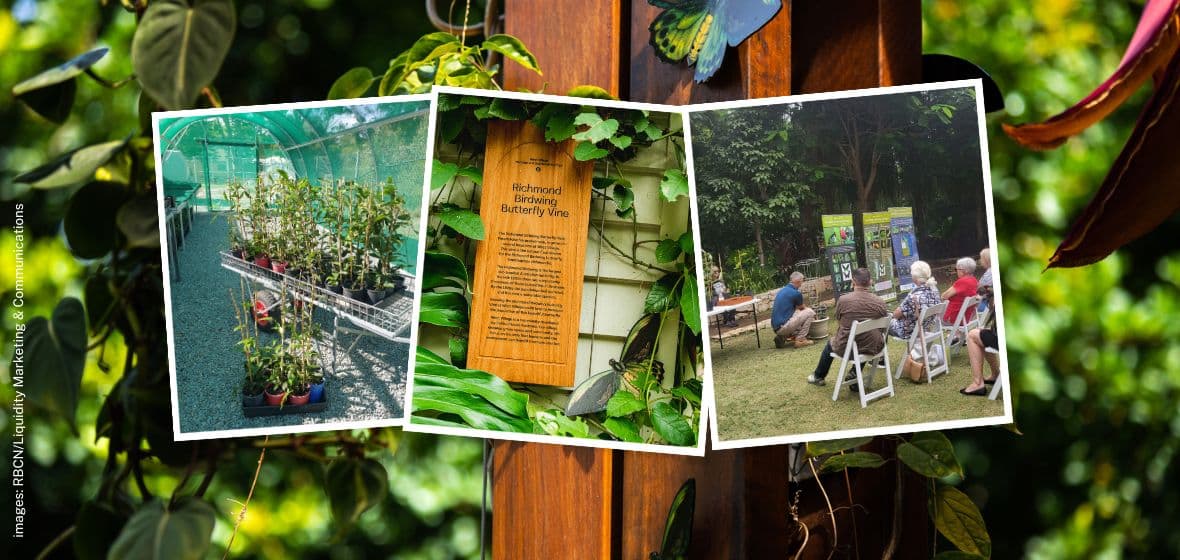28 Apr 2023
Wildlife Queensland and the Richmond Birdwing Conservation Network (RBCN) have teamed up with West Village Brisbane to boost the recovery of the vulnerable Richmond birdwing butterfly.
This month, Wildlife Queensland organised two public workshops at West Village, where we discussed the recovery of the Richmond birdwing butterfly and how the community can contribute to its conservation.
West Village is an eco-friendly and lively urban village in the heart of Brisbane’s West End. It provided the perfect workshop setting with its sub-tropical backdrop in its green space.
RBCN’s Matt Cecil discussed the importance of birdwing butterfly vines in Richmond birdwing butterfly conservation and demonstrated planting techniques during the workshops. RBCN supplied 50 birdwing butterfly vines for workshop attendees and planted 30 within the West Village precinct.
Birdwing butterfly vines may help in the recovery of this vulnerable butterfly species.
Planting birdwing butterfly vines can create habitat corridors and connect vulnerable Richmond birdwing butterfly populations. Although urban space may be seen as a movement barrier for the Richmond birdwing, the species may be encouraged back into the area through community engagement and the planting of the vines.
“High-density apartment developments need not be barriers to all invertebrates, especially butterflies,” said Wildlife Queensland Projects Manager Matt Cecil.
“Balcony and rooftop gardens can provide fantastic conditions for growing plants that a range of native wildlife can enjoy. Birdwing butterfly vines are suitable for growing under these conditions and may provide resources for female Richmond birdwings upon their future return to Brisbane.”
Drastic population decline of the Richmond birdwing butterfly over the last century
The Richmond birdwing butterfly is the largest subtropical butterfly in Australia and is found only in northern New South Wales and South East Queensland. It is protected in Queensland, where it is classified as a threatened species.
Unfortunately, the state’s populations of the Richmond birdwing butterfly have declined since the 1920s. The primary reason for this decline is the loss and fragmentation of their habitats, mainly rainforests. Other ongoing threats include:
- clearing and burning of understorey vegetation
- invasion of riparian native vegetation by weeds
- mining of rainforest valleys for volcanic rocks.
The RBCN hopes to recover the vulnerable Richmond birdwing butterfly and its essential lowland food plant, the birdwing butterfly vine, across this butterfly’s natural ranges.
Wildlife Queensland/RBCN’s partnership with West Village will run over two years and provide numerous opportunities for the community to become involved in the species’ recovery.
Get involved
- Join the RBCN Facebook page or check out our Richmond birdwing butterfly web page to learn how to help this vulnerable butterfly. ·
- Have you spotted a Richmond birdwing butterfly in the wild? Report your sighting here.

